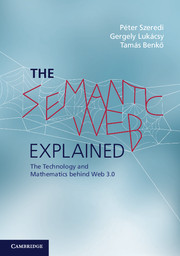8 - The Web Ontology Language
Published online by Cambridge University Press: 05 August 2014
Summary
In this chapter we focus on heavyweight ontologies and on the role they play in the Semantic Web. We introduce the Web Ontology Language OWL, which is based on Description Logic and which was created as an extension of the RDF schema language (discussed in Section 2.6).
In Section 8.1 we give an introductory overview of the OWL language. Next, in Section 8.2, we present the details of the first OWL standard. Finally, in Section 8.3, we discuss the recently released extension of OWL, the OWL 2 standard.
Unless stated otherwise, we will use the term “OWL” when discussing the features present in both the initial and the recent standards. The terms “OWL 1” and “OWL 2” are used to refer to the first and the recent variant of the Web Ontology Language, respectively.
The language OWL – an introduction
The deficiencies of RDF schema and increasing demand led to the development of a large number of ontology languages. At the end of the last millennium, the two most significant languages were the OIL (Ontology Interface Layer) [37] and the DAML-ONT (DARPA Agent Markup Language) [52] languages. The former was developed by the University of Manchester, the latter by the United States Department of Defense (DoD). Both languages were designed with Description Logic in mind; OIL, in particular, is suited for the FaCT reasoner [55] and hence it realises the SHIQ language class.
- Type
- Chapter
- Information
- The Semantic Web ExplainedThe Technology and Mathematics behind Web 3.0, pp. 407 - 450Publisher: Cambridge University PressPrint publication year: 2014

